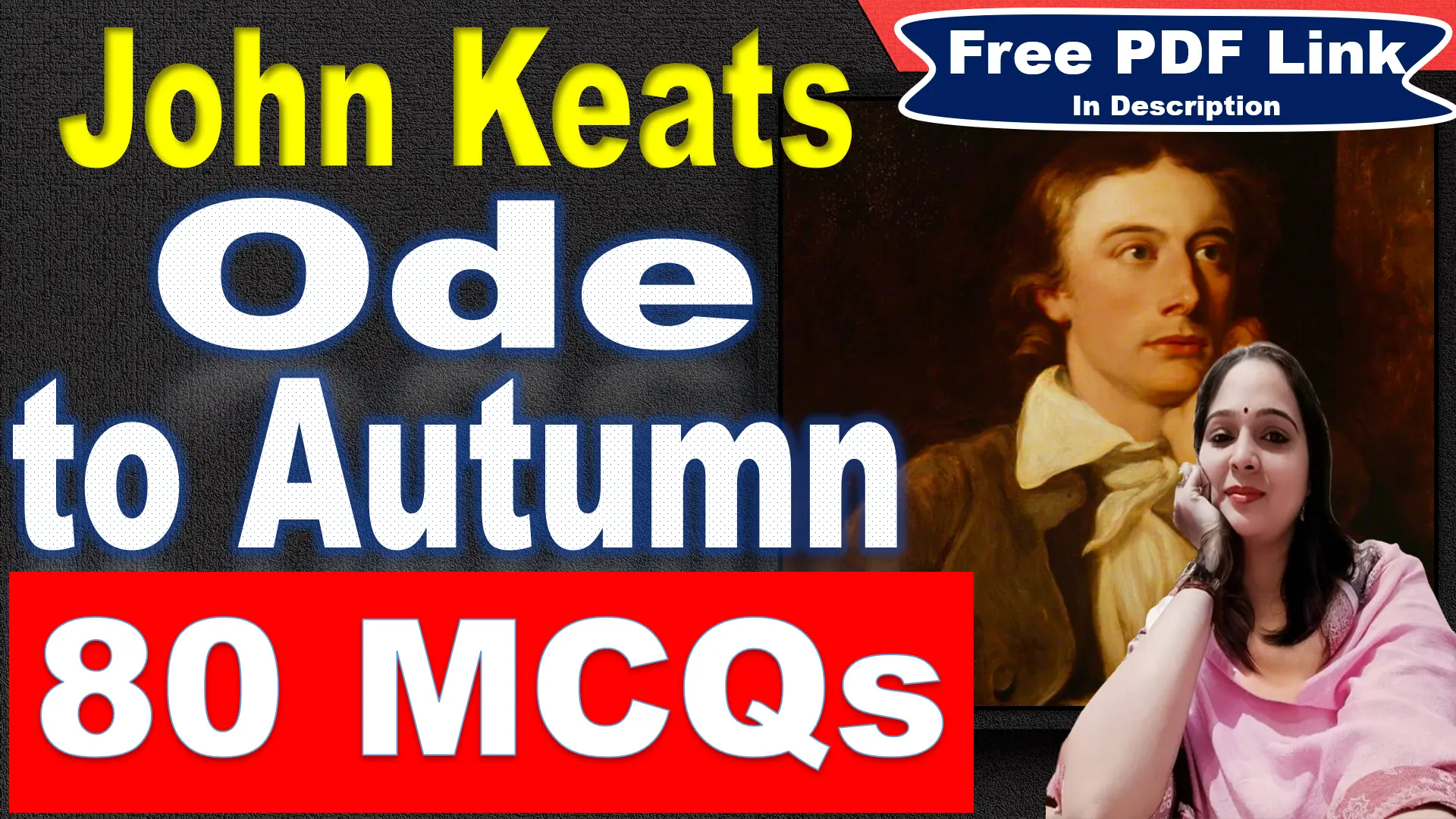Sonnet 23 by William Shakespeare Questions and Answers
Very Short Answer Questions
Who is the author of “Sonnet 23”?
The author of “Sonnet 23” is William Shakespeare.
What is the form of “Sonnet 23”?
“Sonnet 23” is a Shakespearean sonnet.
Who is the speaker in “Sonnet 23”?
The speaker is often assumed to be Shakespeare himself, expresses personal thoughts and emotions about the challenges of expressing love.
What is the setting of “Sonnet 23”?
The setting of “Sonnet 23” is not explicitly stated, but the speaker’s emotions and thoughts form the backdrop of the poem.
What is the main theme of “Sonnet 23”?
The central theme of Sonnet 23 revolves around the speaker’s internal struggle to express love.
What is the plot of “Sonnet 23”?
The speaker compares himself to an actor who forgets his lines out of fear, and to a wild animal or a passionate human whose intense emotion prevents him from expressing it.
What is the tone of “Sonnet 23”?
The tone of the poem is melancholic and introspective.
What is the style of “Sonnet 23”?
The style of “Sonnet 23” is characterized by the use of metaphors and allusions.
What is the message of “Sonnet 23”?
The message of “Sonnet 23” is that sometimes, words may fail to express the depth of one’s feelings. In such cases, other forms of expression, like writing, can convey those feelings more accurately.
What is the rhyme scheme of “Sonnet 23”?
The rhyme scheme of “Sonnet 23” is ABAB CDCD EFEF GG.
What meter is “Sonnet 23” written in?
“Sonnet 23” is written in iambic pentameter.
What is the volta in “Sonnet 23”?
The volta in “Sonnet 23” occurs in the final couplet, where the speaker decides to express his love through writing.
Who is the Fair Youth in “Sonnet 23”?
The Fair Youth is the person to whom the speaker is expressing his love in “Sonnet 23”.
What does the speaker compare himself to in “Sonnet 23”?
The speaker compares himself to an actor who forgets his lines out of fear, and to a wild animal or a passionate human.
How does the speaker plan to express his love in “Sonnet 23”?
The speaker plans to express his love through writing.
What does the speaker ask of the Fair Youth in “Sonnet 23”?
The speaker asks the Fair Youth to understand his silent love through his written words.
What is the speaker’s struggle in “Sonnet 23”?
The speaker’s struggle in “Sonnet 23” is his inability to verbally express his love due to the intensity of his feelings.
What does the speaker feel inadequate about in “Sonnet 23”?
The speaker feels inadequate about his ability to express his love verbally.
What does the speaker hope the Fair Youth will understand in “Sonnet 23”?
The speaker hopes the Fair Youth will understand his silent love through his written words.
What does “Sonnet 23” say about the power of the written word?
“Sonnet 23” suggests that the written word can sometimes convey feelings more accurately than spoken words.
Short Answer Questions
How does the form of “Sonnet 23” contribute to its meaning?
The form of “Sonnet 23” as a Shakespearean sonnet contributes to its meaning by providing a structured framework for the speaker’s thoughts and emotions. The three quatrains allow the speaker to develop his ideas and the concluding couplet provides a resolution or a shift in perspective.
What is the significance of the speaker in “Sonnet 23”?
The speaker in “Sonnet 23” is significant as he represents anyone who has struggled with feelings of inadequacy and self-doubt. His struggle to express his love verbally due to the intensity of his feelings is a universal experience that many readers can relate to.
How does the theme of “Sonnet 23” relate to its plot?
The theme of “Sonnet 23” is closely tied to its plot. The speaker’s inability to verbally express his love due to the intensity of his feelings, which is the main theme, is illustrated through the plot where the speaker compares himself to an actor who forgets his lines out of fear, and to a wild animal or a passionate human whose intense emotion prevents him from expressing it.
What is the role of metaphors and allusions in “Sonnet 23”?
Metaphors and allusions in “Sonnet 23” play a crucial role in conveying the speaker’s emotions and thoughts. They provide vivid imagery that helps the reader understand the speaker’s struggle and his intense feelings of love.
How does the tone of “Sonnet 23” reflect the speaker’s emotions?
The introspective and complex tone of “Sonnet 23” reflects the speaker’s inner turmoil and his struggle with self-doubt and inadequacy. It conveys the depth of his feelings and his struggle to express them verbally.
What does the volta in “Sonnet 23” signify?
The volta in “Sonnet 23” signifies a shift in the speaker’s perspective. After struggling with his inability to express his love verbally, the speaker decides to express his love through writing, asking the Fair Youth to understand his silent love through his written words.
How does “Sonnet 23” explore the theme of self-doubt and inadequacy?
“Sonnet 23” explores the theme of self-doubt and inadequacy through the speaker’s struggle to express his love verbally. The speaker feels inadequate and doubts his ability to convey the depth of his feelings, which is a common experience for many people.
What is the significance of the Fair Youth in “Sonnet 23”?
The Fair Youth in “Sonnet 23” is significant as he is the object of the speaker’s intense love. The speaker’s struggle to express his love and his decision to do so through writing are all centered around his feelings for the Fair Youth.
How does “Sonnet 23” illustrate the power of the written word?
“Sonnet 23” illustrates the power of the written word through the speaker’s decision to express his love through writing. When words fail to express the depth of his feelings, the speaker turns to writing as a more accurate form of expression.
What message does “Sonnet 23” convey about self-expression?
“Sonnet 23” conveys the message that self-expression can take many forms. When verbal expression fails, other forms of expression, like writing, can be used to convey one’s feelings. It also highlights the struggle of living up to one’s own expectations and the challenge of adequately expressing intense emotions.





